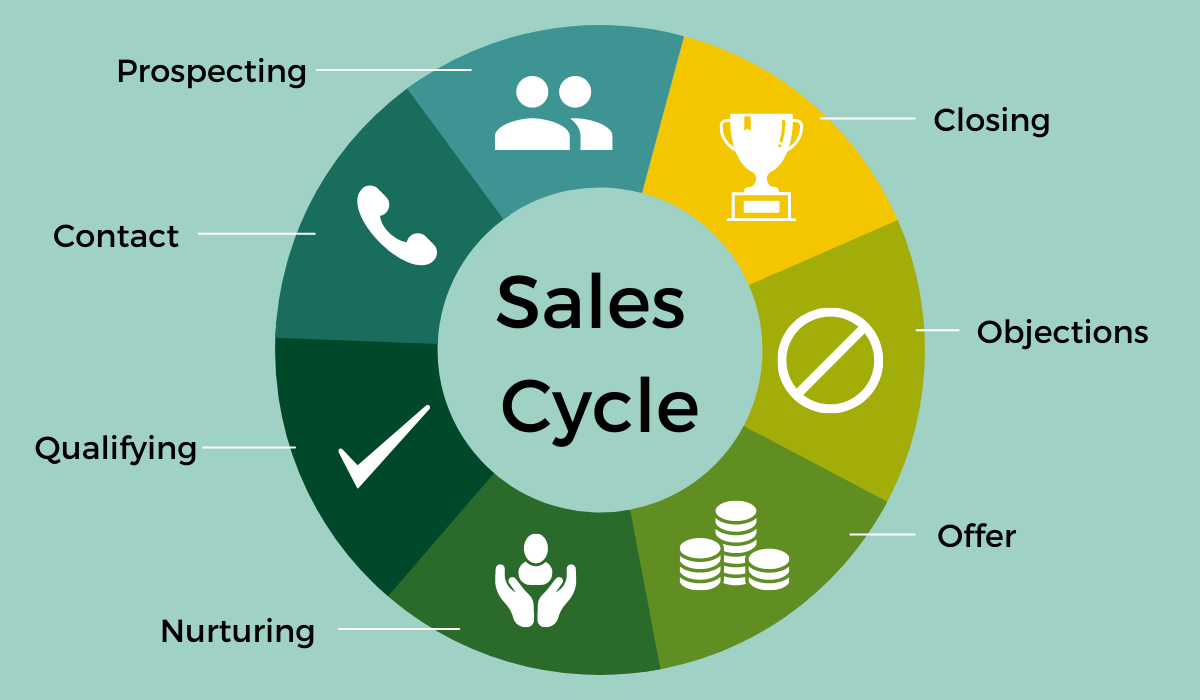A well-maintained CRM system will help spur sales and improve relationships with customers. On the flip side, though, as your business changes and expands, the build-up of CRM can adversely affect sales. This article flags ten signs that you need to do a clean-up of your CRM and how fixing these ten areas will make your sales numbers better.
The CRM is very instrumental in realizing the best sales results for any business. Regular cleaning up of CRM data ensures that your sales team has the correct information and; thus, good decision-making and sales strategies. In this article, we look at some of the signs that tell you it’s time to clean up your CRM and the benefits of addressing these issues
Importance of CRM Data Cleanup
Cleaning up your CRM will go a long way in improving your sales pipeline and increasing efficiency across the board. A clean CRM supports better communication with prospects which leads to stronger relationships. When your CRM data is accurate and well-organized, your team can focus on what matters: closing deals and fostering customer loyalty.

Improved Sales Pipeline with Clean Data
A well-maintained CRM contributes to sales pipeline improvement through:
- Precise Lead Tracking: Clean data can track leads through every stage of the sales funnel precisely.
- Lead Qualification: One can identify quality leads more precisely, using better information.
- Efficiency of Sales: A clean CRM facilitates smooth sales processes, minimizing delays in follow-up and communication.
Boosting Sales Performance
When your CRM is free from clutter, your sales performance can see significant boosts through:
- Effective Targeting: Sales teams can identify and engage with the right prospects.
- Faster Decision Making: It enables fast and more accurate decision-making since one would be abreast of facts that are quite accurate.
- Better Conversion Rates: Most of the time, good quality leads that have been turned in see very impressive rates of conversion.
Signs That Your CRM Needs a Cleanup
- Incorrect Contact Data: When the contact data is wrong, including a wrong phone number, address, or outdated information, this sets your sales off course.
- Duplicate entries: Multiple entries for a single contact create confusion within the team and waste resources that are useful.
- Poor quality of data: Data that is badly formatted or incomplete diminishes one’s ability to build effective sales strategies.
- Inconsistent data: Variations in the structure of data entry may make it difficult to analyze trends.
- Unengaged contacts: Keeping a contact who no longer shows interest is a sheer waste of your time by your productive team.
- High bounce rates: Too many bounced emails mean that the contact information is out of date.
- Complex reporting: If it’s too difficult to build reports, that can be a sign of messy data.
- Long sales cycles: Complicated sales processes might indicate lead management inefficiencies.
- Lack of data updates: Data becomes useless quickly if it doesn’t get updated; therefore, data should be updated regularly.
- Sales team irritation: If your people have problems finding what they need, then it is time for cleaning.
1. Incorrect Contact Data
- Explanation: Incorrect or outdated contact data can seriously impede a sales team’s productivity. For example, sales reps might waste time calling numbers that no longer work or emailing outdated addresses. Over time, this leads to lost opportunities and lowered morale.
- Action Steps: Implement a regular data audit to verify contact information. Utilize CRM features or third-party tools to automate the data cleansing process, flagging and correcting inaccuracies. Consider encouraging staff to validate data upon each interaction, fostering a culture of accurate data maintenance.
- Impact: Accurate data allows sales teams to focus on leads that are more likely to convert, reducing wasted efforts and improving communication with potential customers. Accurate information strengthens relationships, ultimately leading to higher sales success rates.
2. Duplicate Entries
- Explanation: Duplicates create confusion, as multiple team members might unknowingly work on the same contact, leading to inefficiencies and a disjointed customer experience. Additionally, reporting metrics can become skewed if duplicates aren’t addressed, impacting strategic decisions.
- Action Steps: Set up deduplication rules within the CRM system to detect duplicate entries automatically. Many CRM systems offer plugins or extensions to identify and merge duplicates. Educate your team on checking for existing contacts before adding new entries and emphasize the importance of following a standard process to avoid redundant entries.
- Impact: By reducing duplicates, the CRM system becomes easier to navigate and more accurate. This saves time, allows resources to be allocated more effectively, and improves customer interactions, as there’s a single, consistent point of contact.

3. Poor Data Quality
- Explanation: Poor-quality data, such as incomplete or poorly formatted entries, hinders segmentation and personalization, limiting the ability to craft targeted sales and marketing strategies. Without complete data, a company may overlook important opportunities to engage customers.
- Action Steps: Standardize data entry protocols, setting mandatory fields for critical information. Invest in training sessions to educate employees on the importance of data quality. Implement regular data quality checks and validation procedures to ensure data remains accurate and useful over time.
- Impact: Clean, high-quality data supports targeted outreach and accurate customer profiling, which are crucial for effective sales and marketing. It enables better lead nurturing and helps the team reach their goals more efficiently.
4. Inconsistent Data Entry
- Explanation: Inconsistent data, such as varying formats for phone numbers, dates, or names, complicates data analysis and reporting. This inconsistency can make it difficult to analyze customer trends, track engagement patterns, and create tailored strategies.

- Action Steps: Create a comprehensive data entry guideline, detailing specific formats for all critical fields. Configure CRM validation rules to enforce uniform entries, such as standardizing phone numbers or date formats. Regularly review and adjust these rules to align with any updates in CRM needs.
- Impact: Consistency in data allows for smoother reporting, easier trend analysis, and a more reliable view of the customer database. This leads to better insights, accurate forecasting, and more targeted marketing efforts.
5. Unengaged Contacts
- Explanation: Contacts that haven’t shown interest in some time, whether by not opening emails or failing to respond, clutter the CRM and drain resources. Retaining inactive contacts can also make it difficult to identify leads genuinely interested in the product or service.
- Action Steps: Set up a protocol for identifying unengaged contacts, perhaps defining them as those who haven’t interacted within a specified period. Segment these contacts into a re-engagement campaign, using targeted content to gauge their interest. Remove or archive contacts that remain inactive after re-engagement attempts.
- Impact: Focusing on engaged leads streamlines CRM resources and boosts team productivity. By concentrating efforts on prospects who show active interest, sales and marketing teams can increase conversion rates and create stronger, more genuine customer relationships.
6. High Bounce Rates
- Explanation: High bounce rates indicate issues with contact data, often reflecting outdated or incorrect email addresses. This can reduce deliverability rates, impact email campaign success, and damage the sender’s reputation with email providers.
- Action Steps: Routinely validate and update email addresses using an email verification tool. Implement double opt-in for new sign-ups to ensure that addresses are correct from the start. Consider removing contacts that consistently bounce after several attempts, as these can hurt your overall performance.
- Impact: Lower bounce rates improve deliverability, increasing the chances of emails reaching their intended audience. It enhances the effectiveness of email campaigns, improves engagement, and helps maintain a positive sender reputation, boosting long-term outreach success.
7. Complex Reporting Processes
- Explanation: Complicated reporting may indicate disorganized or cluttered data. If it’s challenging to build reports or find specific insights, it could be due to unnecessary fields, unstructured data, or a poorly optimized CRM.
- Action Steps: Regularly review the CRM data structure, removing irrelevant or redundant fields. Work with CRM specialists to simplify the reporting process, possibly by creating templates. Train team members on best practices to streamline data entry for efficient reporting.
- Impact: Simplified reporting processes save time, improve productivity, and make data analysis more accessible for decision-making. This ultimately enables faster, data-driven insights that guide the team toward better business outcomes.
8. Prolonged Sales Cycles
- Explanation: Long sales cycles could suggest inefficiencies in lead tracking or follow-up processes. In a cluttered CRM, it can be challenging for sales teams to access relevant customer data quickly, slowing down the progression from lead to conversion.
- Action Steps: Review lead management workflows and streamline any bottlenecks. Ensure that lead profiles contain the necessary information and follow-up schedules are clearly defined and easily accessible. Simplify the CRM interface to prioritize frequently used tools, making lead information easier to locate and act upon.
- Impact: Streamlined processes reduce the sales cycle length, allowing sales representatives to close deals faster. This directly improves the bottom line, enhances customer satisfaction, and boosts sales productivity by increasing the efficiency of the team.

9. Lack of Data Updates
- Explanation: Data that’s not regularly updated quickly becomes obsolete. For example, contact details may change, or a lead may progress further in the sales funnel. If this information isn’t updated, the CRM loses its value as a tool for strategic decision-making.
- Action Steps: Establish a routine schedule for data audits and updates. Use CRM automation tools that can prompt updates or synchronize with external databases to refresh information. Assign accountability within the team, ensuring specific members are responsible for data maintenance.
- Impact: Regular updates keep CRM data relevant and useful, improving both sales efficiency and customer engagement. An up-to-date CRM supports effective decision-making and helps maintain accurate, real-time views of the sales pipeline.
10. Sales Team Frustration
- Explanation: A disorganized CRM can frustrate sales team members, who might have trouble locating essential information or navigating cluttered entries. Frustration with the CRM leads to lowered productivity and morale, impacting overall team performance.
- Action Steps: Simplify the CRM layout by prioritizing essential fields and hiding or removing non-essential ones. Regularly seek team feedback on usability issues, and address these promptly. Offer CRM training to ensure all users feel comfortable with the system and know how to navigate it efficiently.
- Impact: A user-friendly CRM enhances sales team morale, improves productivity, and minimizes errors. With an organized system, sales representatives can focus more on building customer relationships and closing deals rather than struggling with the interface.
Steps to Optimize Your CRM
Knowing the signs your CRM needs cleanup is one thing. How to optimize is another. Regular cleaning will simply keep your sales team more productive and focused on their goals.
Automated CRM Cleanup for Efficiency
Utilizing automation tools for CRM data cleansing can save time and reduce human error. Consider:
- Data Deduplication Tool: Make use of software that automatically finds duplicate entries and merges the same.
- Regular Audits: Establish audits to determine the quality of the data and remove all discrepancies.
- Automated Updates: Automate your systems where updates in contact information occur on a recurring basis.
Enhancing Lead Management Efficiency
Effective lead management is vital for reducing sales cycles and enhancing productivity. To optimize lead management, consider:

- Lead Scoring: Give scores to leads for their engagement and value.
- Contact Segmentation: Segment the contacts into groups based on their prospects for targeted outreach and efficient resource allocation.
- Monitor Engagement: Keep monitoring the level of engagement regularly and remove the contacts who are unengaged.
Solutions for CRM Cleanup
If your CRM shows many of the signs listed above, it’s highly important to take action regarding the situation. Below are some solutions for effective cleaning up CRMs:
- Improve Data Quality: Train your staff on better ways to enter and handle data. Ensure that the people in the organization have standard practices to follow so that your data quality will be maintained.
- Regular Maintenance Schedule: Establish a routine of scrolling through CRM data to review and update by removing inactive contacts and making any corrections where inaccuracies may be present.
- CRM Integration: Your CRM may be integrated with other tools that could contribute to the cleanliness of your data and the smoothness of operation. Examples are email marketing platforms and analytics tools.
- Consultant Experts: In cases where it is extremely messy, hiring a consultant or a data expert brings invaluable insight into the methods of cleaning.
Conclusion
A disorganized CRM creates obstacles to your sales and harms customer relationships. By recognizing the signs that it’s time to clean your CRM, and by doing the right things, you’ll be able to fine-tune your sales pipeline. Remember, clean data isn’t a luxury-it is a basic requirement for optimum sales performance. Ongoing maintenance, combined with automation and training, stands to give your selling crew the best possible chance at success. Take time for CRM cleaning, which will make your sales strategy effective enough to drive sustainable growth.
In a nutshell, proactive means taken toward CRM data maintenance will work magic for your sales efficiency and effectiveness. Implement these strategies to keep your CRM fresh and constant. Only then will you be able to achieve your business goals and obtain better relationships with your customers.




